Peter Lobner
In April 2021, I posted a short article entitled, “Multi-messenger Astronomy Provides Extraordinary Views of Uranus,” which included two composite views of Uranus, created by combining near-infrared images taken by the Keck-1 telescope at an elevation of 4,145 meters (13,599 ft) on Maunakea, Hawaii, with X-ray images taken with the Advanced CCD Imaging Spectrometer (ACIS) aboard the orbiting Chandra X-Ray Observatory.
Now, the Webb Space Telescope has taken stunning near-infrared images of the next, and outermost, planet in our solar system, Neptune (sorry, Pluto). You can read NASA’s 21 September 2022 news release on these images here: https://www.nasa.gov/feature/goddard/2022/new-webb-image-captures-clearest-view-of-neptune-s-rings-in-decades
The Webb images of Neptune, taken on July 12, 2022, are reproduced below.
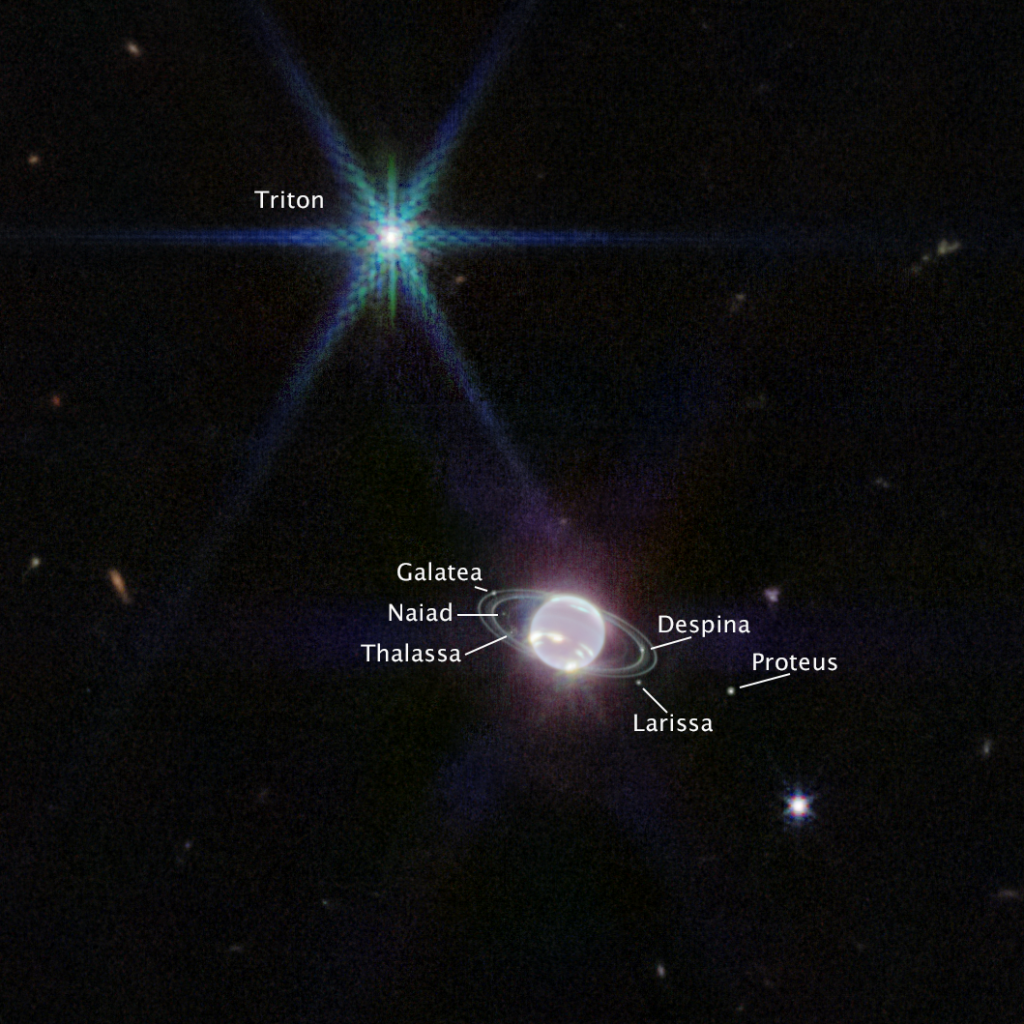
Source: NASA, ESA, CSA, STScI
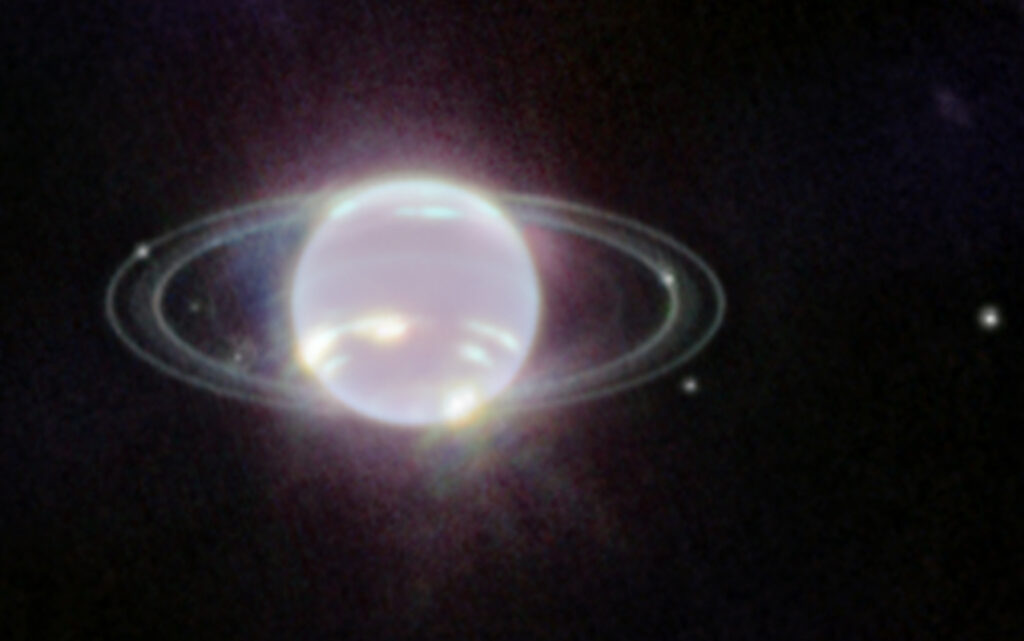
The Space Telescope Science Institute (STScI) has created a Resource Gallery of Webb Space Telescope images, which you can browse here: https://webbtelescope.org/resource-gallery/images. Currently there are 280 images in the Webb Resource Gallery. I think this is a website worth revisiting from time to time.
NASA’s Solar System Exploration website provides views of Neptune from several earlier sources, including the 1989 Voyager 2 deep space probe, the Hubble Space Telescope and the European Southern Observatory’s (ESO) Very Large Telescope (VLT). Check it out here: https://solarsystem.nasa.gov/planets/neptune/galleries/
2018: The following image was taken in July 2018 during the testing of the narrow-field, adaptive optics mode of the optical/infrared MUSE/GALACSI instrument on ESO’s VLT, which is located at an elevation of 2,635 m (8,645 ft) at Cerro Paranal, in the Atacama Desert of northern Chile.
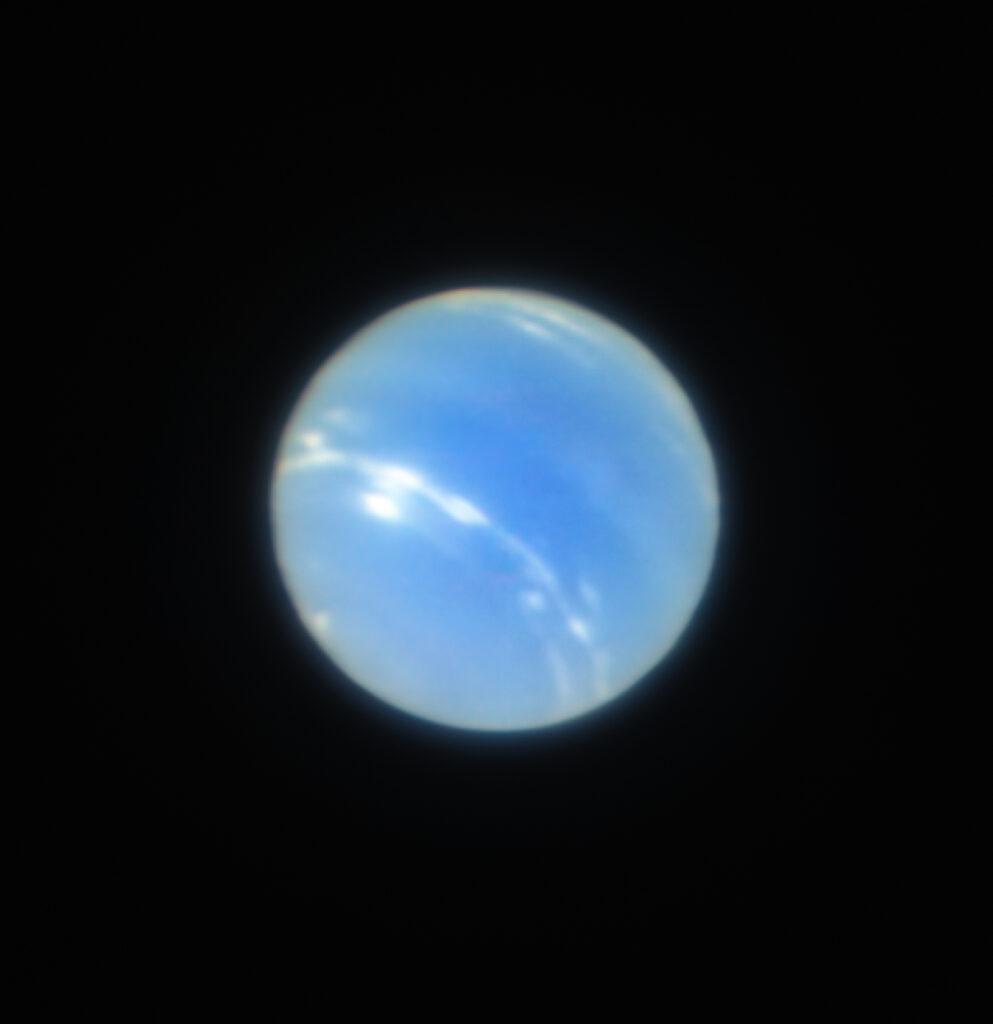
1994: The more recent Webb Space Telescope and VLT images are much better than the Hubble Space Telescope optical-range images of Neptune taken more than two decades earlier, in 1994.
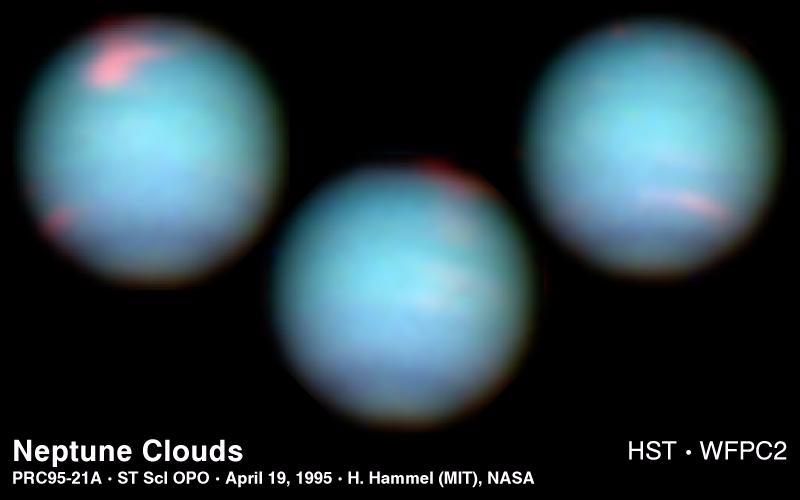
1989: In October 1989, the following whole planet view of Neptune was produced using images taken through the green and orange filters on the narrow angle camera during the Voyager 2 spacecraft flyby of the planet.
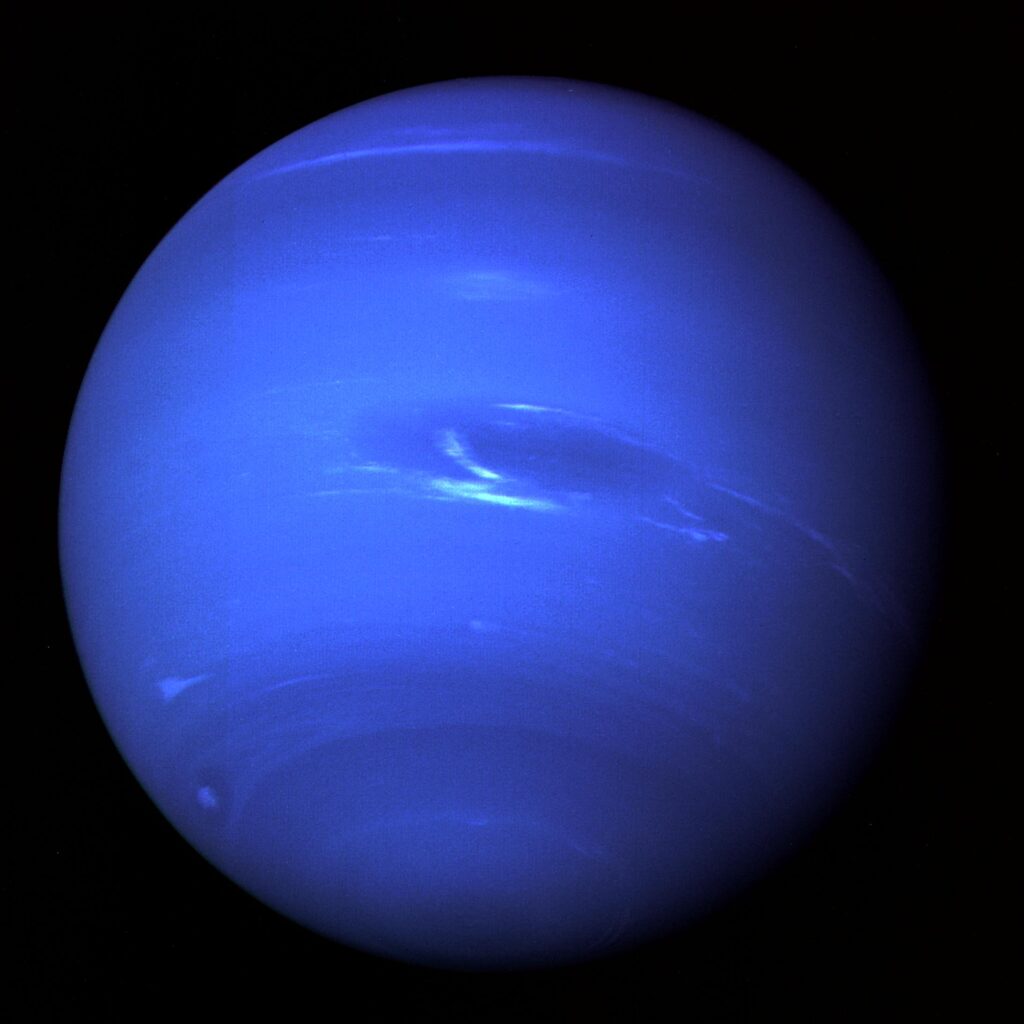
Source: NASA/JPL-Caltech (1989)
In the future, we can hopefully look forward to more detailed multi-messenger images of Neptune, combining the near-infrared images from Webb with images from other observatories that can view the planet in different spectral bands.
For more information
- “New Webb Image Captures Clearest View of Neptune’s Rings in Decades,” NASA press release, 21 September 2022: https://www.nasa.gov/feature/goddard/2022/new-webb-image-captures-clearest-view-of-neptune-s-rings-in-decades
- “30 Years Ago: Voyager 2’s Historic Neptune Flyby,” NASA, 21 August 2019: https://www.nasa.gov/feature/jpl/30-years-ago-voyager-2s-historic-neptune-flyby
Video
- “Voyager 2’s Neptune footage from space 1989.” Posted by Daniel Izzo, 22 April 2008: https://www.youtube.com/watch?v=DCrsBoasg3w